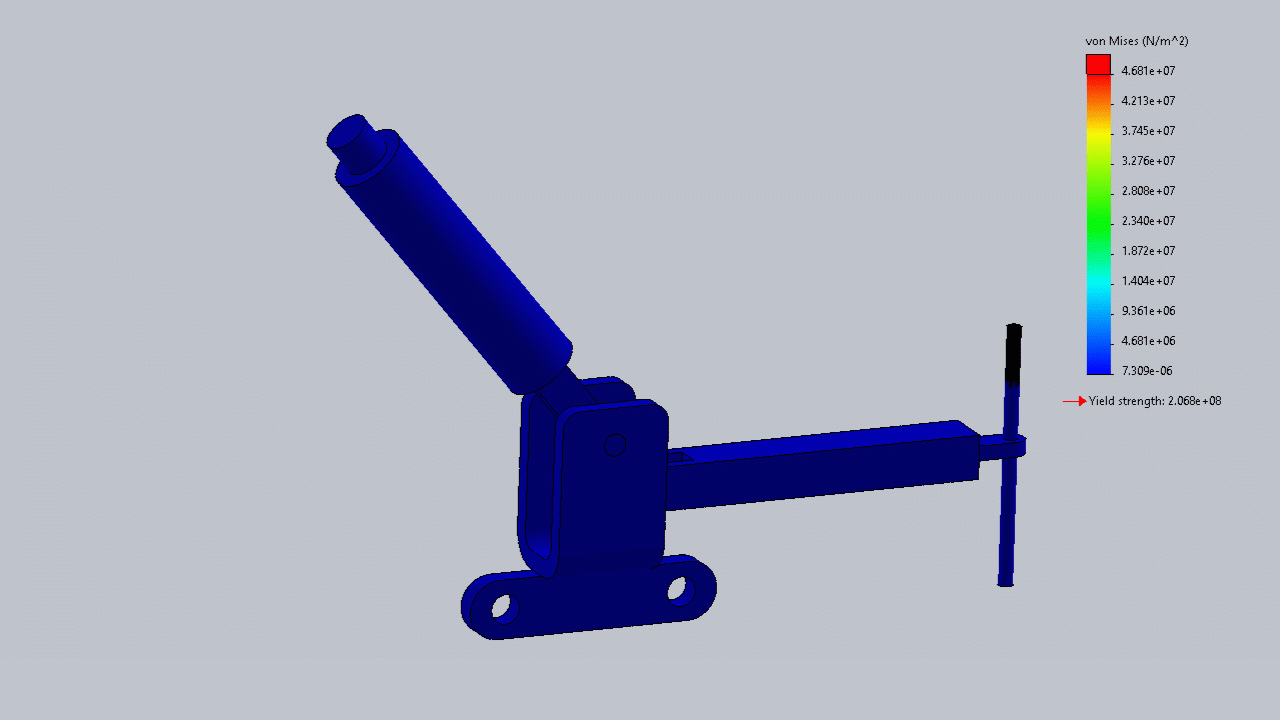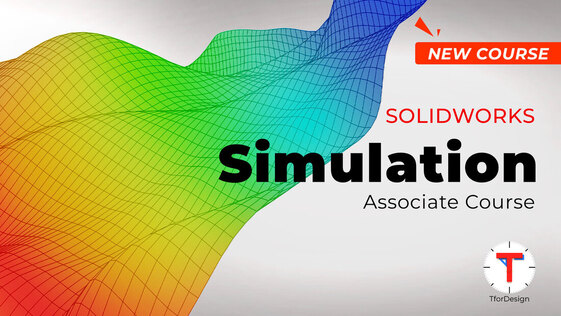|
When asking about FEA simulations, you will likely find two groups of people: one calling it straightforward and easy and the other calling it complex and challenging. You will also find lots of young people sharing colored images and more experienced people talking equations and strange terms. What is behind all that? [it is not a cross-generational thing, at least I hope] Most of that comes from the introduction of software simulation tools. There is no doubt that Simulation tools, including SOLIDWORKS, Ansys, and others, brought in tremendous benefits and enhancements to simulation. However, they made simulation look super easy. But is it? So, let us try to break that further down to figure out some of the issues with the simulation software. First, one area to clarify is that most simulation studies are applied by following a similar overall procedure. You can check our previous blog on 8 steps to conducting FEA static studies for more information. Now, we did a simple study, let us talk about the complications. This blog will discuss the meaning behind the results, results verifications, and the overwhelming available options. What Do the Results Mean to Start With?Simulation software are famous for their colorful plots, usually ranging from red to blue, and accompanied by numbers. While it is easy to get numbers and plots, the more important question would be: what do those numbers even mean? Von Mises, stresses, strains, the factor of safety, stiffness, etc. More importantly, what do those numbers mean for us specifically in whatever project we are working on? How can they be used to drive/guide meaningful design iterations? Answering those questions would often require more in-depth knowledge and experience on topics that go beyond the apparent software application and into principles of design and mechanics of materials. Verdict:
Getting attractive and colorful plots can be pretty exciting when you start with simulation, but there is often more than meets the eye. How Do You Know the Software Gave You Correct Results?Perhaps one frequent and more challenging question you can get working with simulation is: How do you know you got usable/correct results? Simulation software nowadays are very capable; they are also growing rapidly. However, they are by no means a complete, accurate tool. Issues in results can be caused by anything from setting the simulation conditions wrong, software deficiency, to issues with our input to the software. Being able to spot those errors would often require both experience and depth of engineering knowledge. Some methods used to help can range from quickly spotting nonsensical results to benchmarking with hand calculations or other means. Verdict:
All the Options Out There!As simulation tools grow, so does the number of options they provide to help you get optimal results for your usage. Those include more variety in conditions setting, more options in refining the mesh, more plots, etc. Being able to navigate all those options to produce a usable study can range in difficulty according to the complexity of the study. The complexity comes from the number of options and having to understand what each option means in an absolute sense and what the option means to the specific study you are working in. For example, meshing refinement has several options, from setting a global mesh density to auto-adaptive meshing to manually adjusting the mesh in different areas of the design. Knowing about those options is the easy part compared to uniquely applying them to best fit each project. Verdict:
So, is Simulation Easy or Complex?All the writing above might have made you more confused than not. Is simulation easy or complex? The reality is simulation is just like other expanding fields of study. It has a surface, but beneath that exists a great depth. The deeper you go, the more complex things can get. Thus, do not be surprised when you meet people spending 20+ years using simulation and are still learning. While software applications came as great enablers for simulation, they can give some a false sense of knowledge, neglecting the depth of the field. Getting attractive and colorful plots can be pretty exciting when you start with simulation, but there is often more than meets the eye. Should I Learn Simulation?In terms of software application, a structured course can give you the best value for your time. You can check out the TforDesign SOLIDWORKS Simulation Associate course. This will build you a strong foundation in the practical software application using SOLIDWORKS. Another part is to equip yourself with a theoretical background in Mechanics of Materials and Finite Elements Analysis. Both fields are well-established in academia. Thus, browsing academic resources can give you the best value. When pursuing both directions, it is essential to know that growing in the area can take lots of time and patience. Are you a user of simulation tools? How was/is your experience? Let us know in the comment section. By Tayseer Almattar, TforDesign FounderTayseer is the founder of TforDesign. He has a passion for learning design and making all learning digestible and exciting.
LinkedIn: https://www.linkedin.com/in/tayseer-almattar-design-innovation
2 Comments
Finite element analysis (FEA) is one of the most important tools used in the design and engineering of modern products. By using FEA, engineers can predict how a product will respond to certain stresses, allowing them to make changes before the product is even manufactured. This allows companies to save time and money on research and development, as well as production costs.
Reply
1/27/2023 09:07:08 am
It was fascinating to know that simulation software is now growing quickly. My friend is working on a project that requires finite element analysis. I should advise him to work with a contractor with the right technology for finite element analysis services.
Reply
Leave a Reply. |
AuthorThe following blogs are written by TforDesign team and community members. Categories
All
|
© 2013 - 2024 TforDesign. All rights reserved.
Terms & Conditions | Privacy Policy | Cookie Policy | Sitemap
Terms & Conditions | Privacy Policy | Cookie Policy | Sitemap




 RSS Feed
RSS Feed